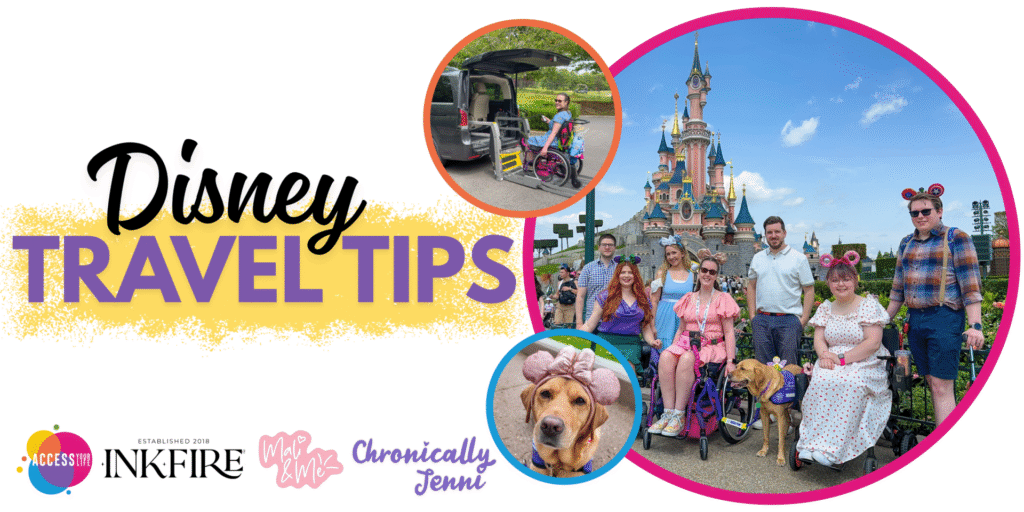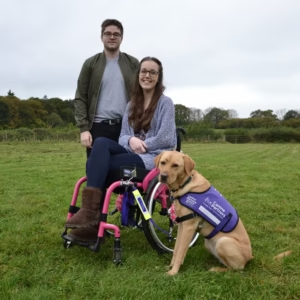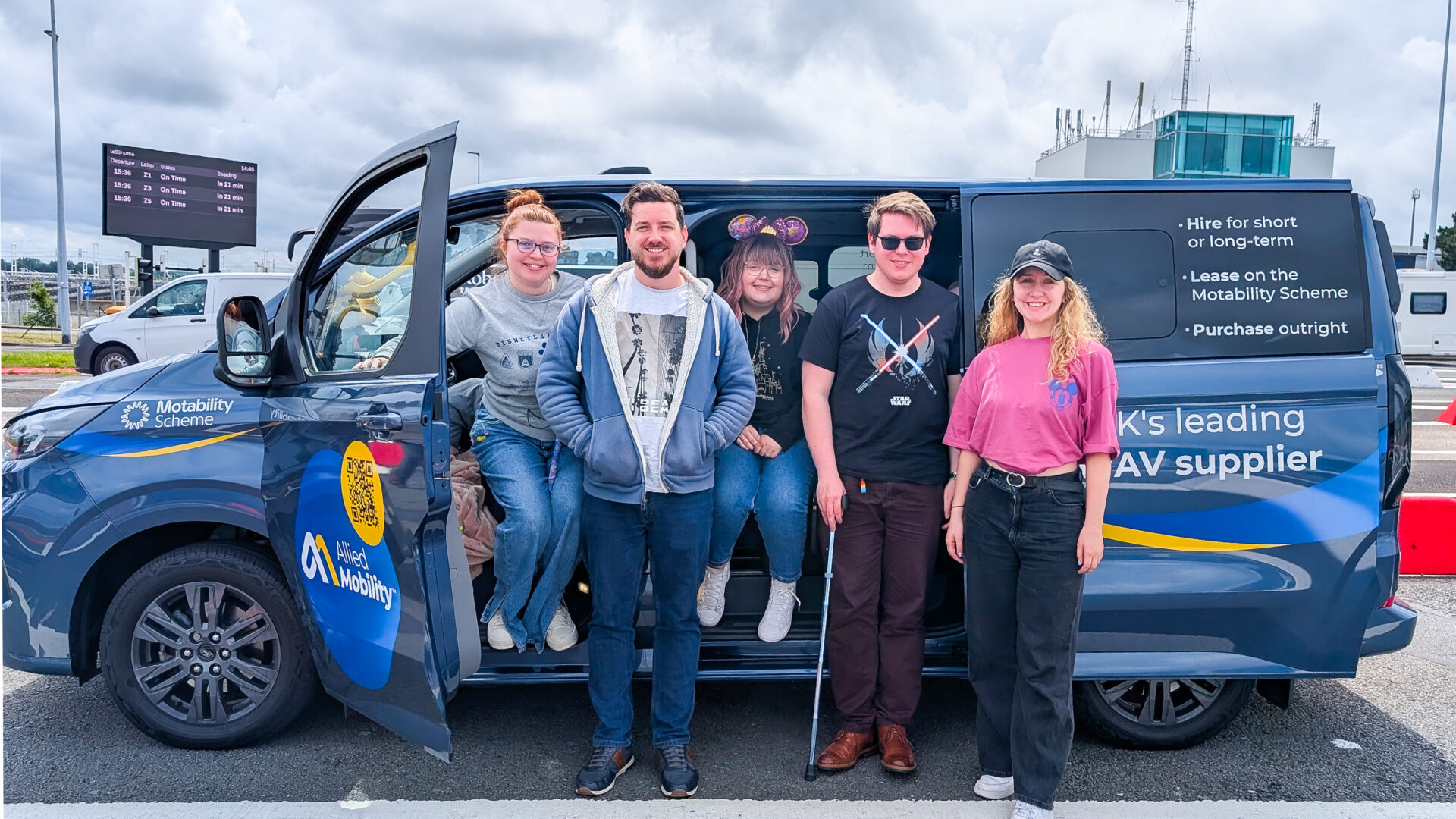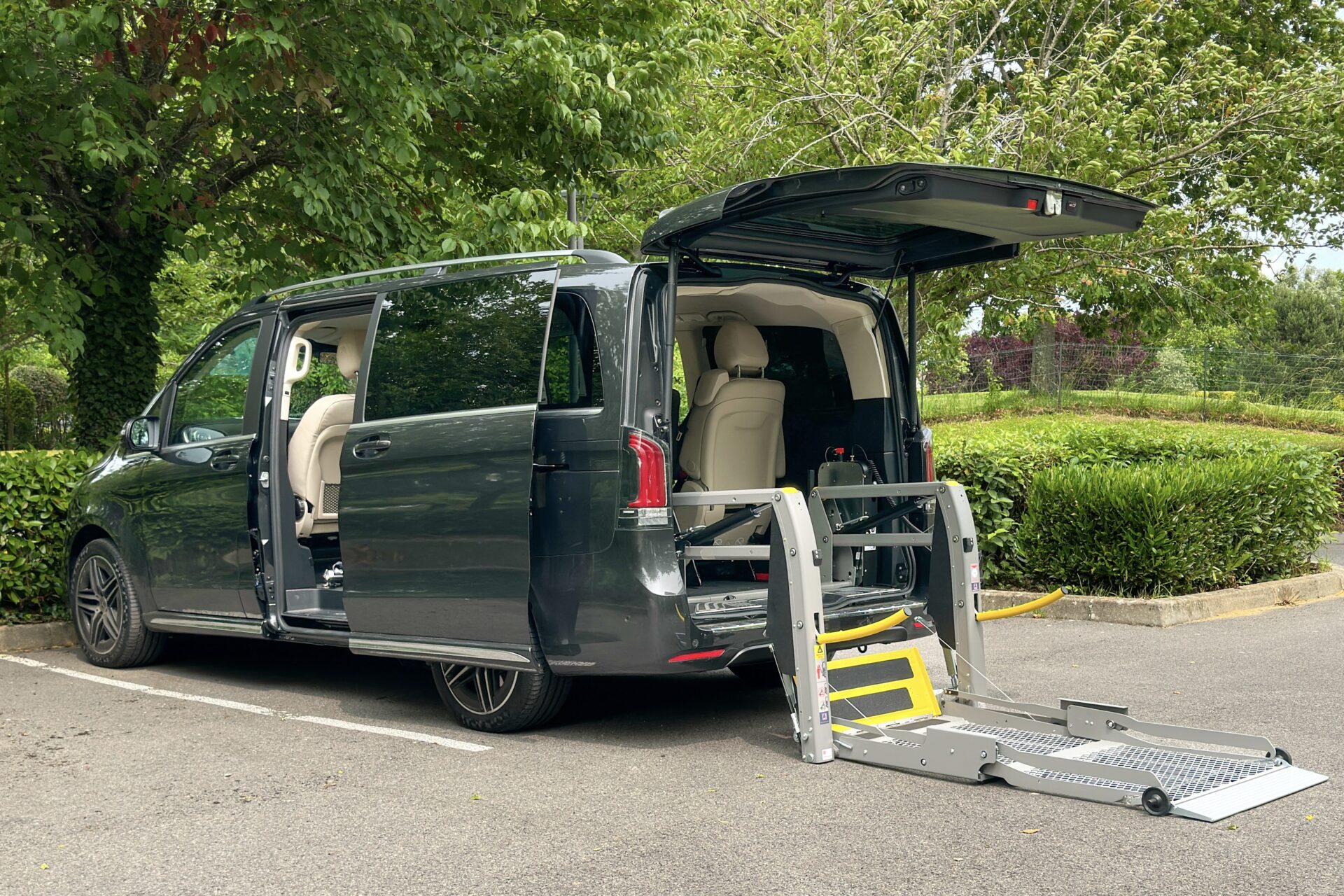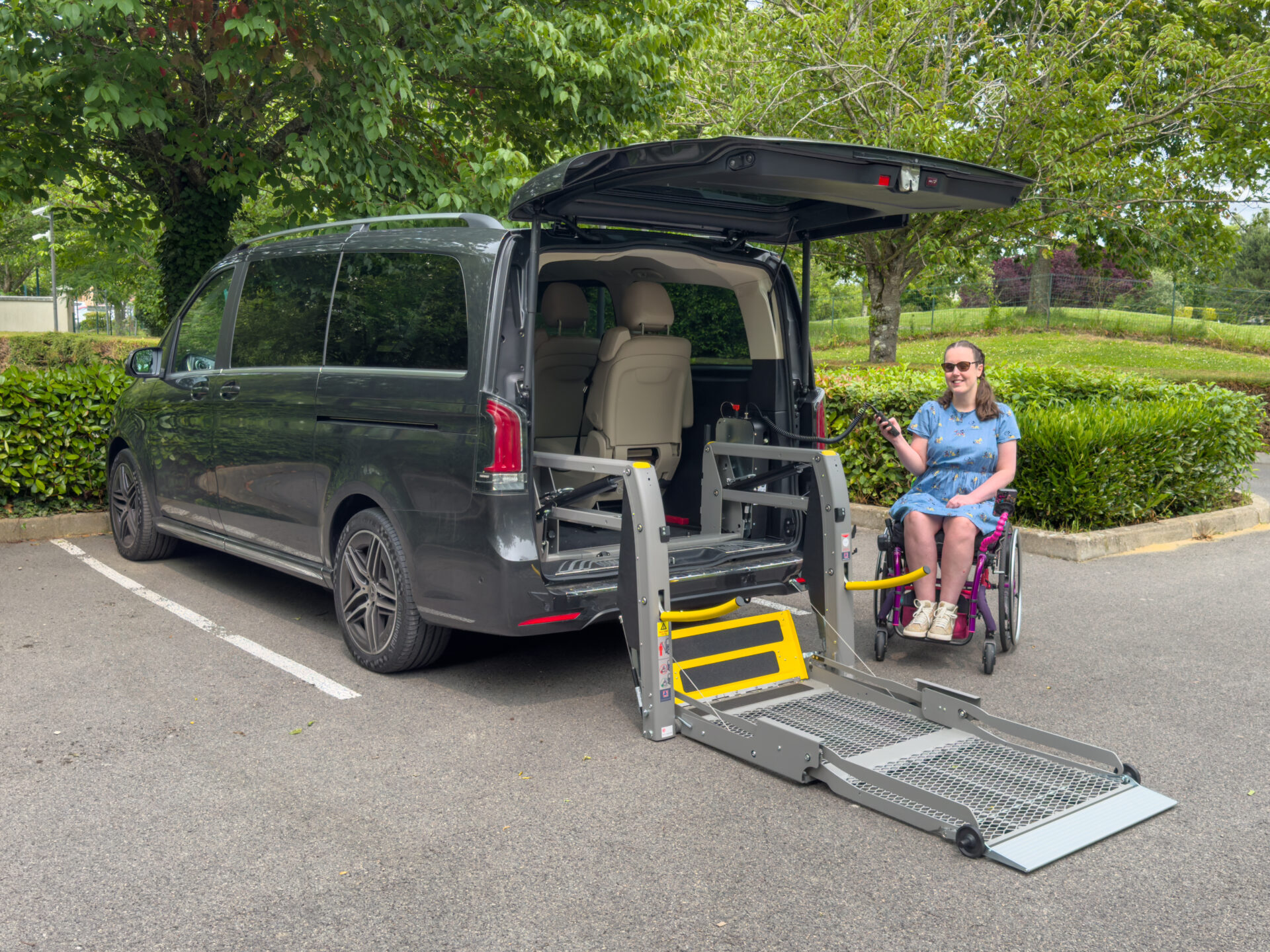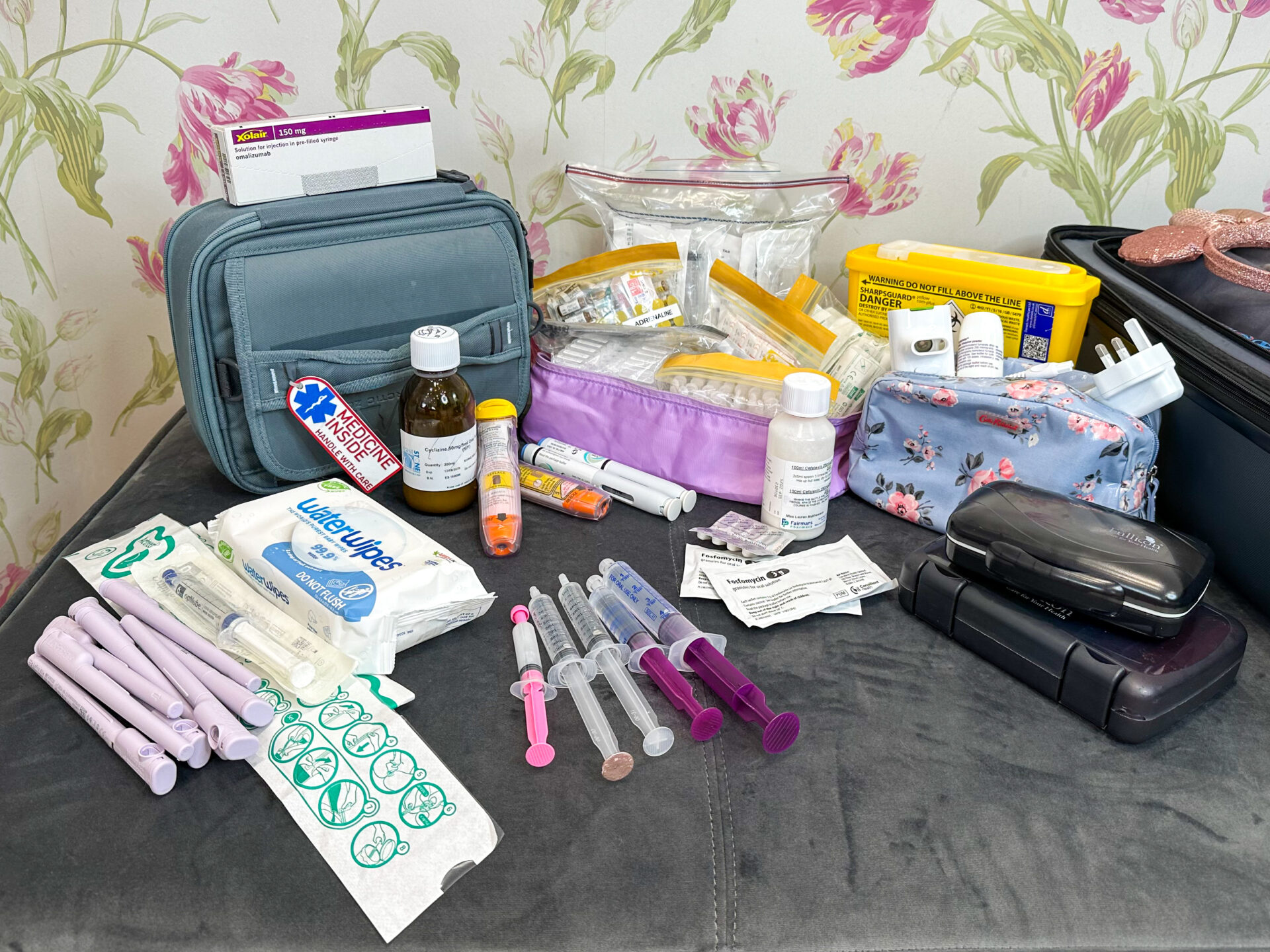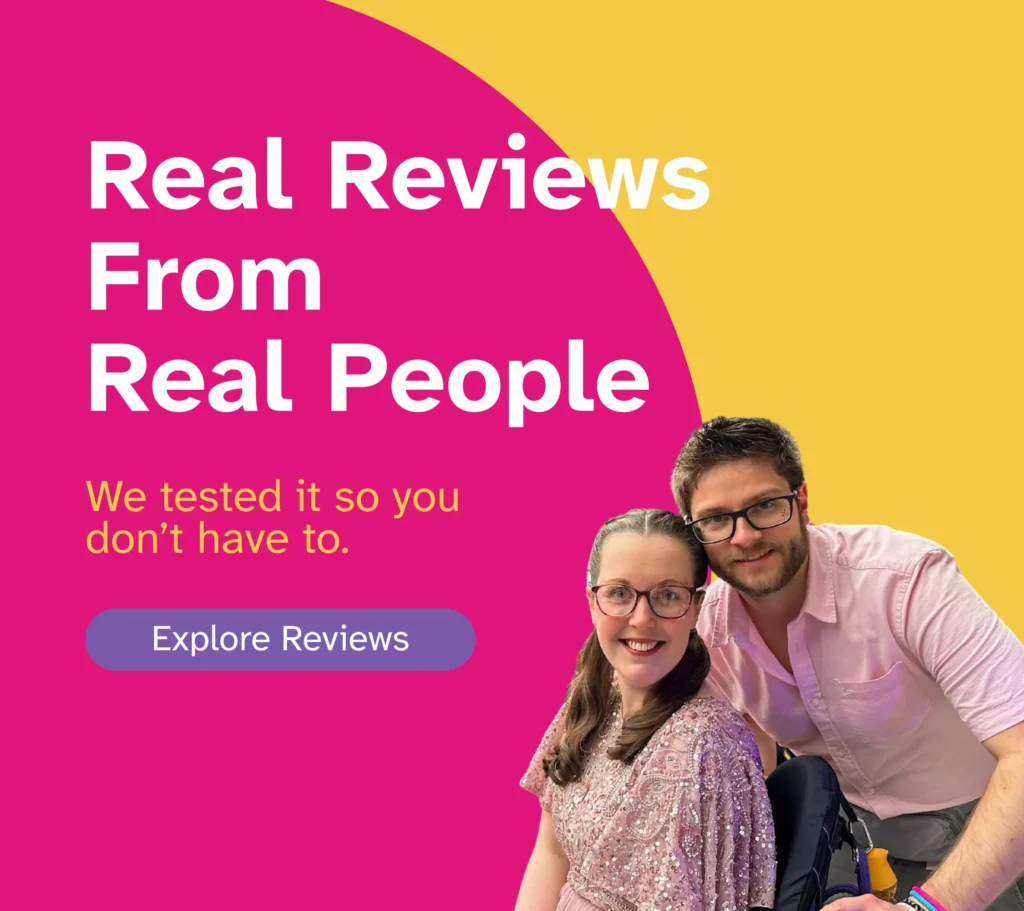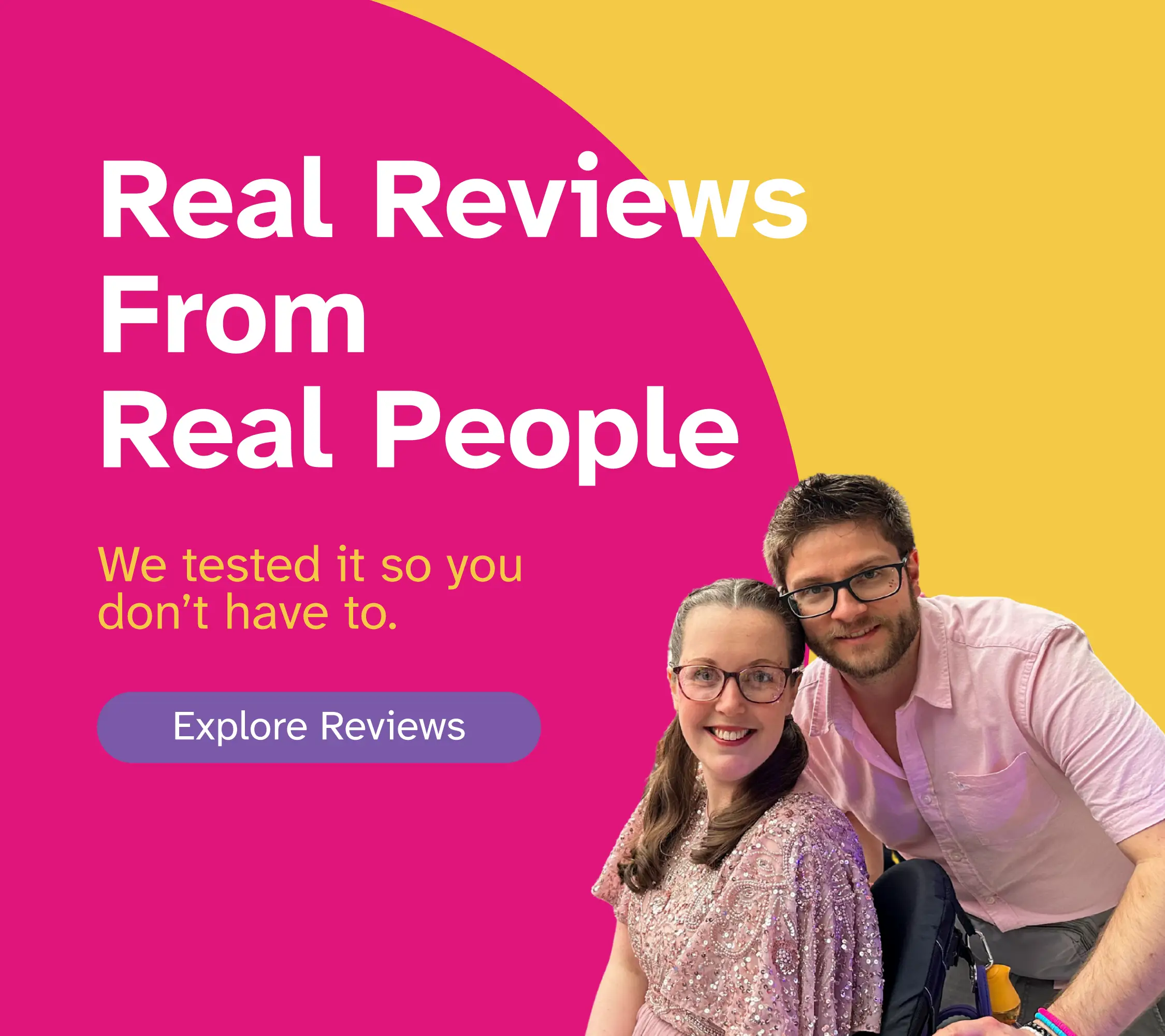Planning a trip to a Disney Park can be both exciting and overwhelming, particularly when coordinating accessibility needs such as wheelchair access, assistance dog safety, dietary requirements, allergies, medication management, and medical supplies.
To support you in creating your own accessible Disney adventures, we have partnered with Chronically Jenni, Inkfire, and Mali & Me. Together, we will share a wealth of helpful insights, primarily focused on Disneyland Paris due to its proximity to the UK, but much of the advice can be broadly applied to other Disney Parks.
Deciding On A Destination:
Your primary considerations are cost, transport, accommodation, weather, crowds, and accessibility.
For instance, I prefer visiting Walt Disney World in Florida in January to avoid the high temperatures, humidity, and storms common at other times of the year. While Disneyland Resort in California has consistent weather, the longer flight and time difference require more recovery time and complicate medication adjustments. Disneyland Paris’s weather is similar to the UK, making it easier to navigate, but wheelchair accessibility outside the parks is limited.
Choosing Your Travel Dates:
Understandably, commitments like school holidays or pre-allocated annual leave can limit your options. However, avoiding peak periods when planning your trips can significantly reduce costs and lead to a more relaxed experience with lower crowd levels. This also allows for more efficient use of your time.
For example, I enjoy visiting Paris in mid-June, between the UK and French school holidays. This time offers warmer weather, longer park hours, and summer entertainment without the peak crowds. Early November is also typically quieter due to the seasonal changeover.
Thinking Ahead & Packing Sensibly:
Create a comprehensive packing list of essential and specialised items for your trip, taking into consideration the duration, predicted weather, necessary medications, specialist equipment, and luggage restrictions.
Even as a wheelchair user, I recommend packing at least two pairs of comfortable shoes, ensuring you always have a dry pair available. For daily outfits, consider layered options such as a dress with shorts underneath, along with leggings and a cardigan to add during the cooler evenings. And of course, don’t forget the obligatory Minnie Mouse ears—bonus points if they coordinate with your outfit! Remember to pack appropriately for the weather, including sun cream, a hat, and cooling towels or mats for warm weather, or extra layers, gloves, and heat packs for cold weather.
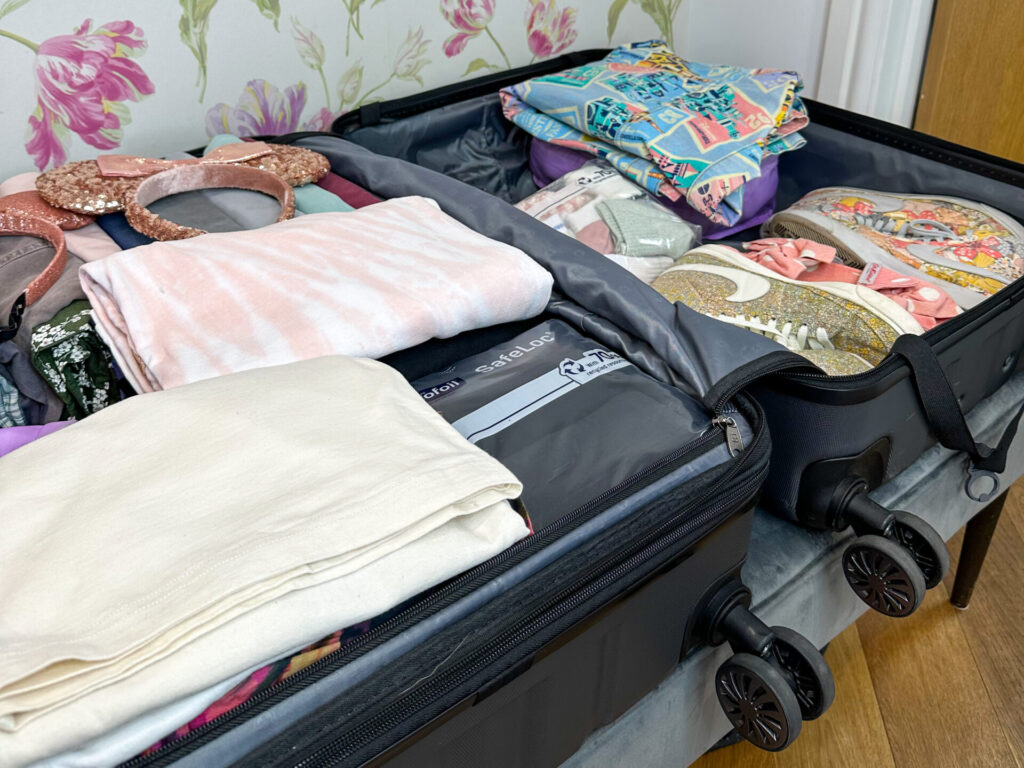
Taking a good backpack, whether worn or attached to your wheelchair, helps hold essentials like a refillable water bottle, snacks, a portable phone charger, a handheld fan, and extra layers. I also pack an under-seat wheelchair bag for securely storing my medication cool bag, wheelchair blanket, and assistance dog supplies.
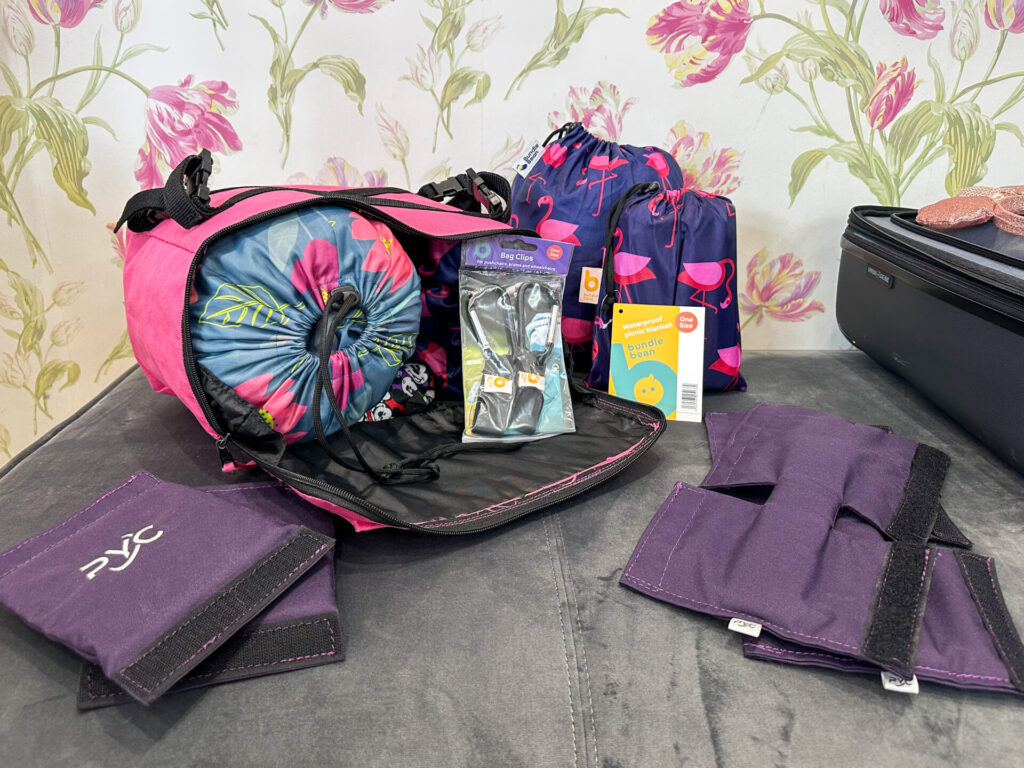
Organising Medical Supplies:
Always pack enough medication for your entire trip, plus extra for unexpected delays. Store medical supplies in packing cubes, prepare daily pill pots, and pre-draw liquid medications to save time and prevent messes throughout your trip. Take copies of your prescriptions in case you need refills while abroad.
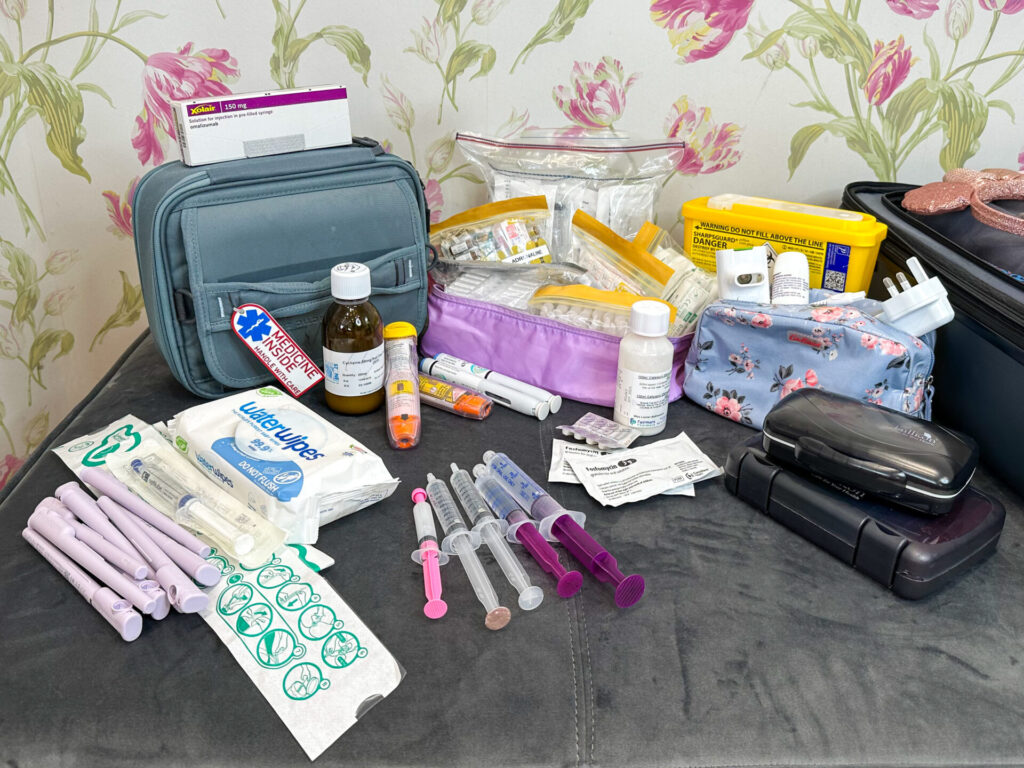
Essential medications are exempt from liquid restrictions if they have pharmacy labels matching the name on your passport. Most airlines permit an extra cabin bag for medical supplies, but you may need to present prescriptions or a doctor’s letter.
Completing forms about your medical conditions may be necessary to arrange appropriate assistance with your transport provider. Some individuals require medical clearance to travel. If this applies to you, I recommend allowing extra time to obtain it, inquiring about any processing fees, and ensuring your doctor has all necessary travel details to avoid having your application rejected.
For added peace of mind, I always wear a medical ID bracelet and carry a document in both English and French that contains vital medical information, GP’s contact details, a list of allergies, my travel insurance provider and policy number, and copies of my emergency healthcare plans.
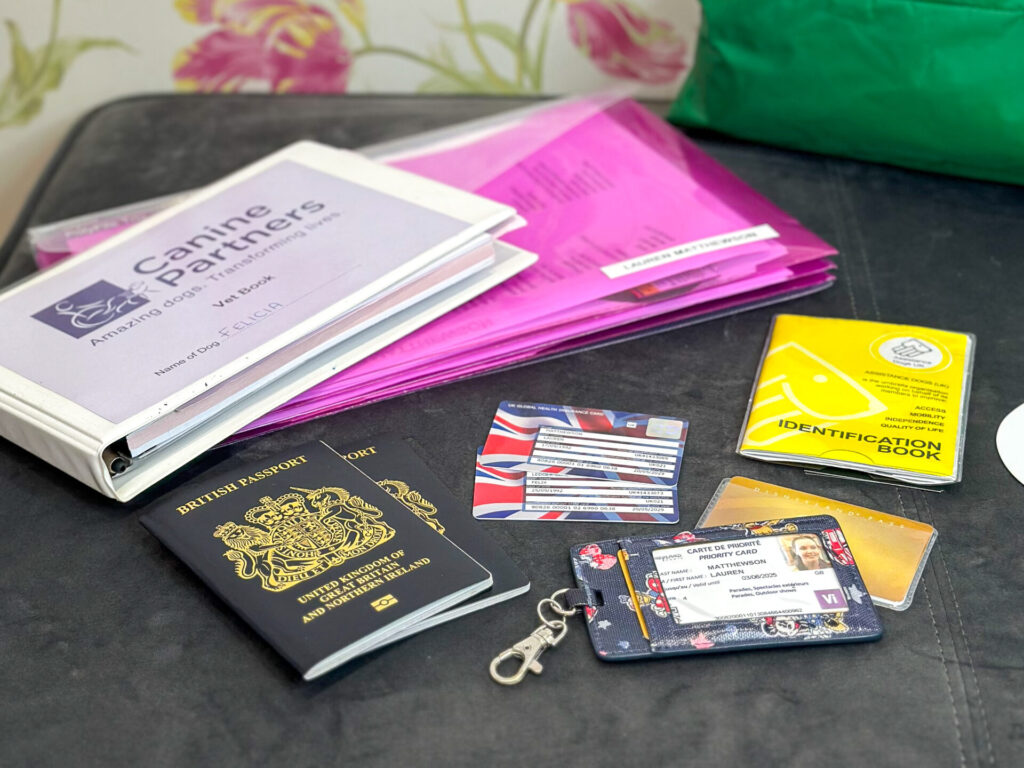
Obtaining travel insurance, especially with pre-existing medical conditions, can be both challenging and expensive. However, it offers vital protection for a variety of situations, illnesses, and emergencies. But it is crucial to declare all your medical conditions to ensure your policy is valid. We also recommend shopping around and comparing quotes from various providers, such as Mark Bates, to find the best coverage for your needs.
Preparing Medical Equipment:
Contact your equipment manufacturer or supplier to confirm the make, model, size, battery type, and serial number of your equipment. Ask for travel advice that specifically addresses your equipment’s transportation guidelines (such as removing the battery), charging with a UK plug adapter, any necessary documentation (like battery certification), and any compatibility issues (such as avoiding metal detectors). Additionally, verify your travel provider’s specific requirements regarding equipment weight, size, and battery capacity restrictions.
If flying, take clear photos of your equipment before check-in. Remove cushions, armrests, headrests, and other accessories and pack them in your carry-on luggage for safekeeping. Protect delicate parts, such as joysticks, with adequate padding. Label your wheelchair with handling instructions in both languages and consider attaching a tracking device for added security.
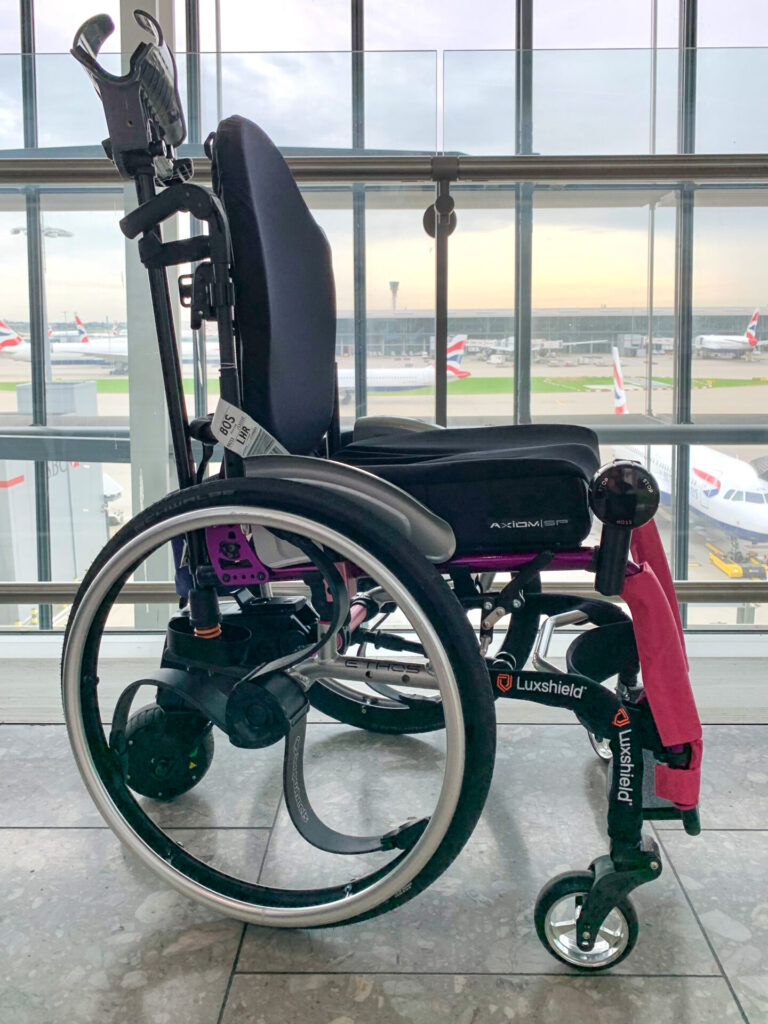
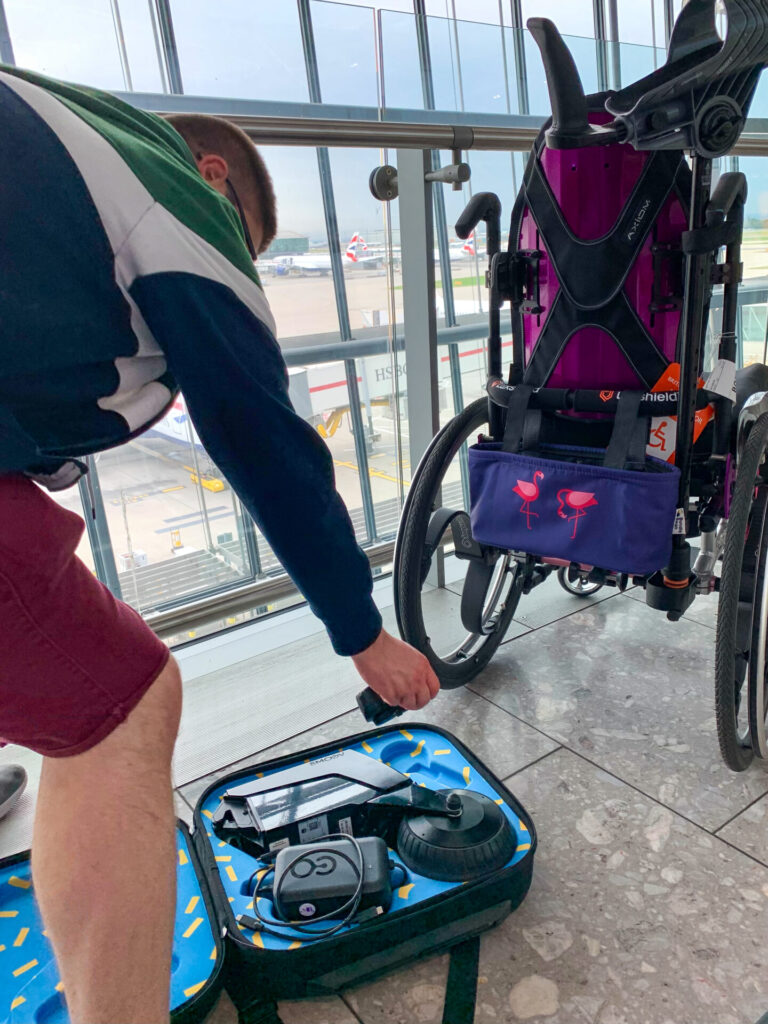
Finally, purchase adequate mobility equipment insurance via Mark Bates. The AYL Team has relied on their comprehensive coverage for years, which includes accidental damage, post-accident repairs, theft, vandalism, and 24/7 national breakdown recovery. For more information, please visit their website or contact them directly.

Check out Chronically Jenni’s corresponding video and stay tuned for the next instalment in our Disney travel tips series! We’ll be sharing why we chose to drive to Disneyland Paris with the help of Lewis Reed and Allied Mobility.
